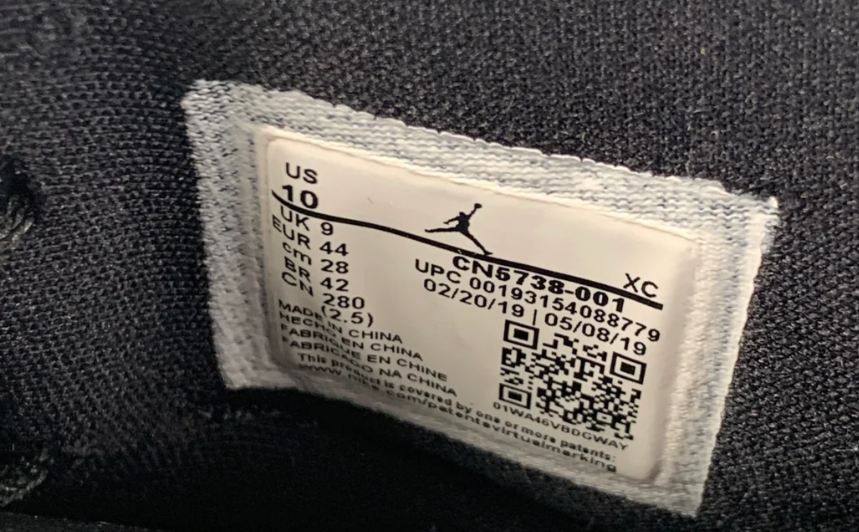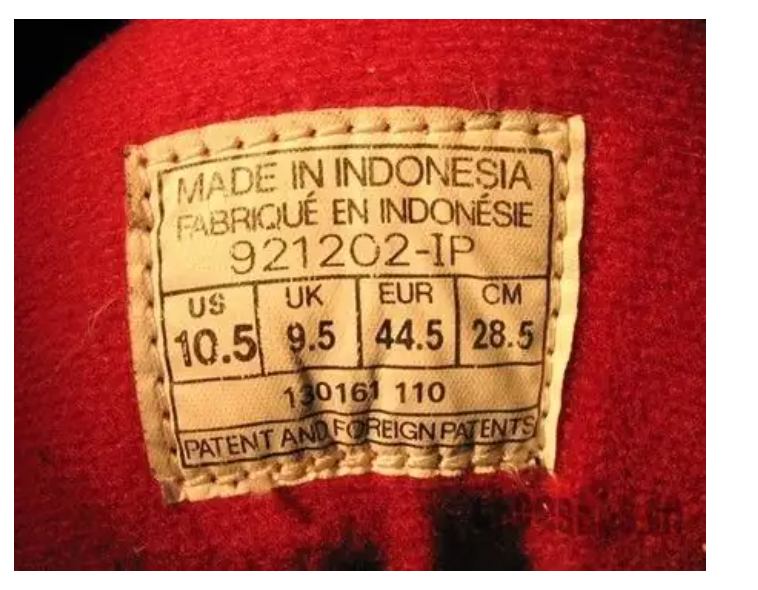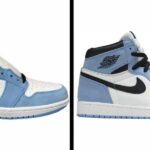Using the shoe label to identify fake Jordan 1 is one of the most common ways to detect the legitimacy of sports shoes. However, the shoe label contains a lot of information. Do you know how to distinguish fake Jordan 1 by the shoe label?

There are several ways to identify fake Jordan 1 shoe labels:
- Look at the font: The font on the genuine shoe label is usually clear and regular, while the font on the fake may be blurred and deformed.
- Check the alignment: There should be a correct alignment between the elements on the shoe label. For example, the alignment of letters and numbers, the alignment of letters and letters, etc. If the alignment is not accurate, it may be a fake.
- Observe the barcode: The barcode of the genuine shoe label has only two thicknesses, and the thickness of the lines transitions naturally. The barcode lines of the fake may be uneven or have a third thickness.
- Check the size column: The spacing between the letters such as “US”, “UK”, “EUR”, “cm” in the size column on the shoe label should be roughly equal. If the spacing difference is large, it may be a fake.
- Check the UPC code: The genuine shoe label must have a UPC code, and the spacing between the letters and numbers in a row of the UPC code must also be equal.
- Pay attention to the overall printing quality: Authentic shoe labels usually have better printing quality, with even colors and no dragging. Fakes may have poorer printing quality, with different shades of color or blurred areas.
In fact, Nike AIR JORDAN’s shoe logo is divided into two versions, the old and new. The old and new shoe logos are divided by 1995. Most of the Jordan 1 shoe logos we can buy now are new shoe logos after 1995.
Let’s talk about the old AJ1 shoe label first. That is, the old label from 1995 and before (some old shoe models after 1995 and some special basketball shoes also belong to this type of shoe label). This type of shoe label is basically sewn on, and there is no circle C on the shoe label. The information on the shoe label is divided into 4 parts:
The first part is the origin of the shoe, the year of the shoe and the factory where the shoe was produced. 921202 means that this shoe was born on December 2, 1992, and was manufactured in an Indonesian factory; the second part is the size of the shoe, in the order of US UK EUR and CM; the third part is the product number; the fourth part is the patent right and its patent ID. Please enjoy the pictures of the old shoe label:

Let’s take a look at the new shoe label, which is the shoe after 1996. It is also divided into 4 parts:
The first part is the place of origin. The year the shoe was produced (the date the shoe label was sewn or pasted on the shoe), the factory that produced the shoe, and the square C; The second part is the shoe size, and the order is still US UK ERU and CM; The third part is the item number and barcode. It should be noted that some old shoes have dates and numbers under the barcode, and some do not. I don’t know why, but I know that if there are dates and numbers under the barcode, the date is the release date, and the number is the ID of the shoe label (note that for old labels with dates and numbers under the barcode, the date and number must be close to the barcode); The fourth part is the patent number, PAT NO. The current shoe label has become UPC.

The way to identify this type of shoe label is that US UK EUR CM are all close to the line above, the first two digits of the year are basically the same as US, the last two digits of the year are basically the same as UR, the factory name is one body length longer than EUR, the circle C is also half a body length longer than CM, and the last letter of the place of origin is basically the same as the letter above.
The above is how to identify fake Jordan 1 by shoe label. In fact, this method is also applicable to other AJ series. Judging whether Jordan 1 is fake or genuine by verifying shoe label is just a superficial method. For high-end Jordan 1 replicas, this method is not applicable.



